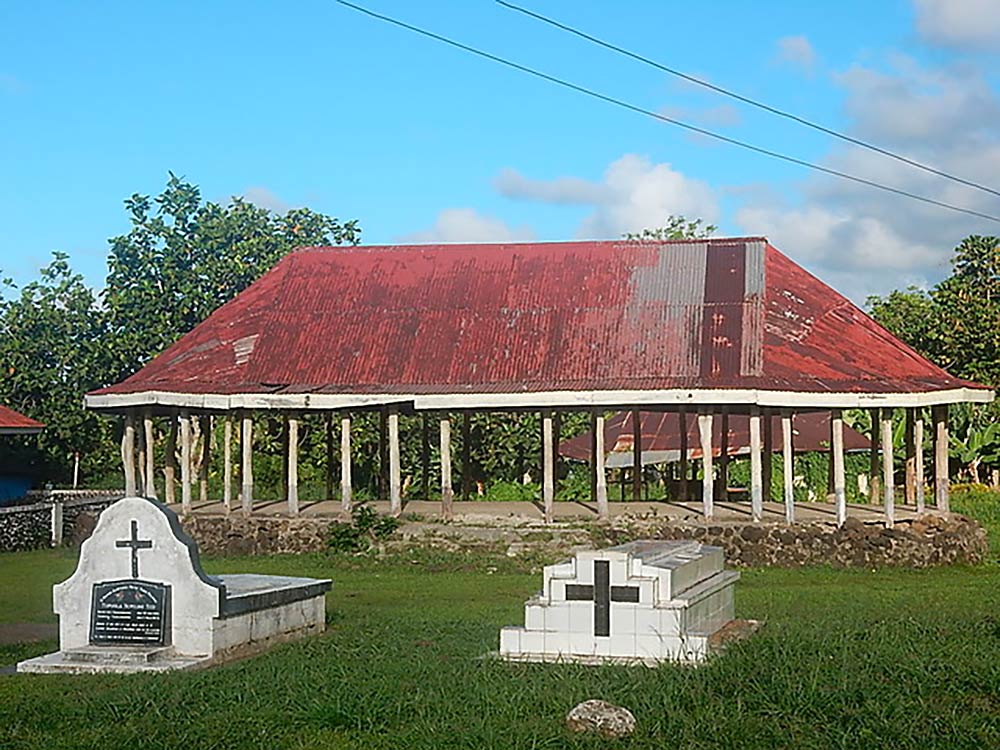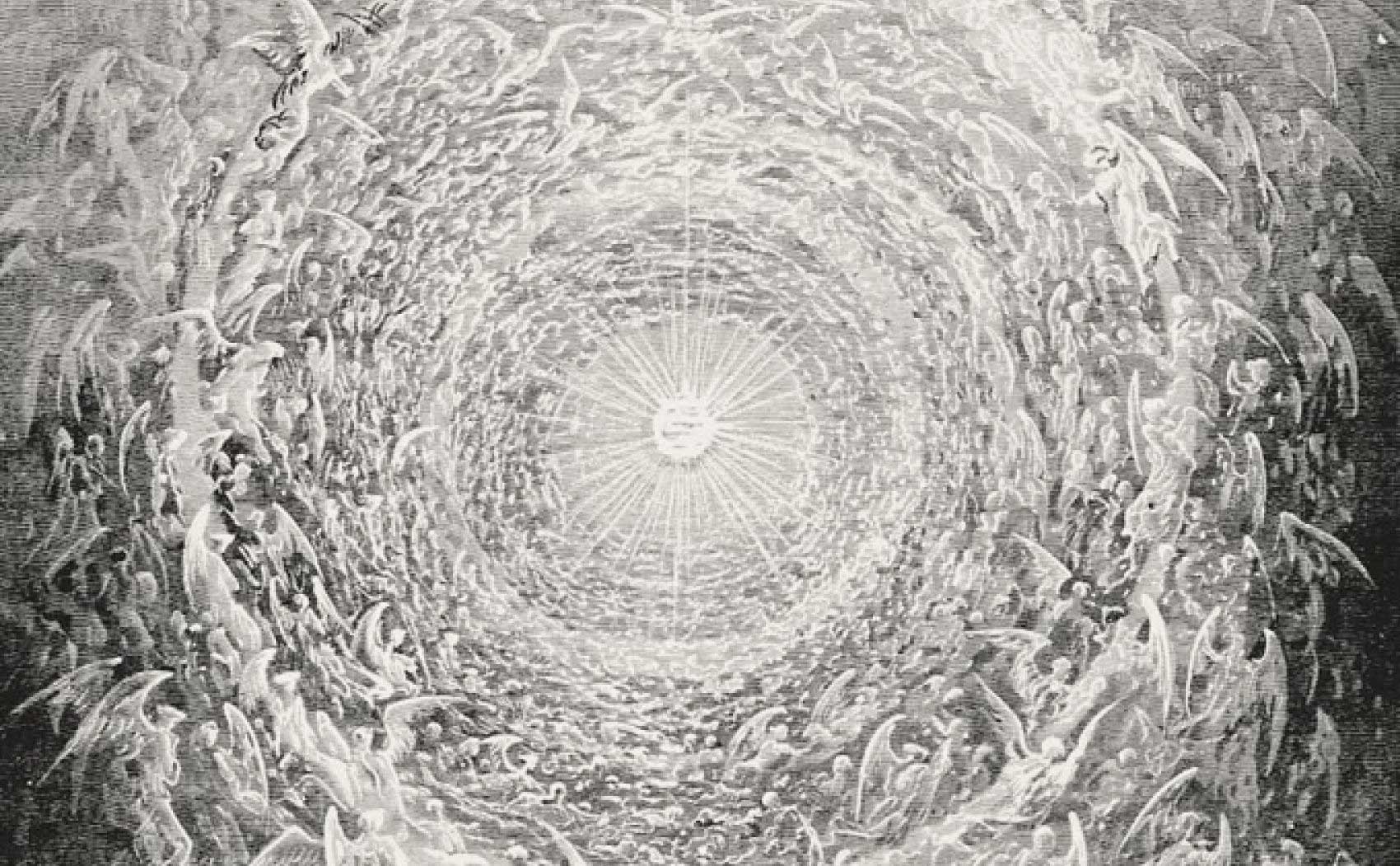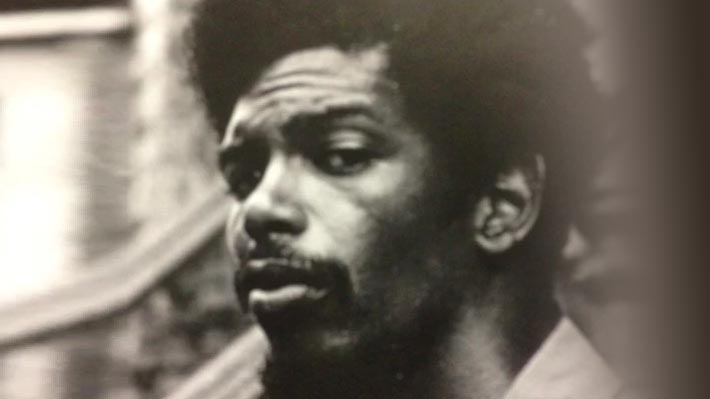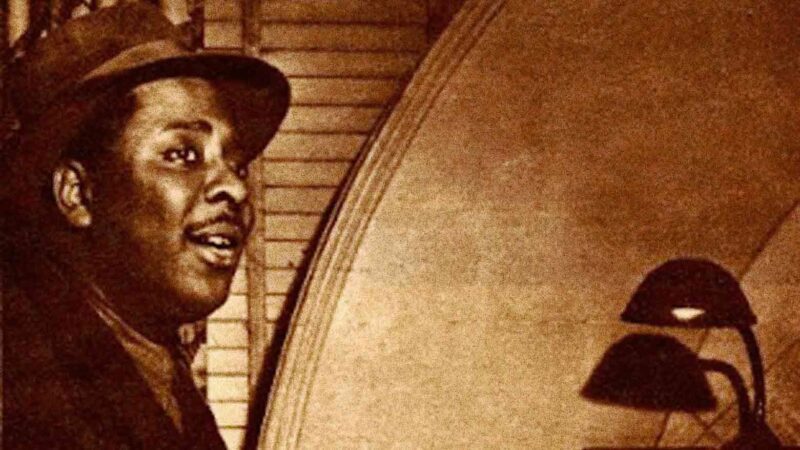Louis Dudek was one of my professors at McGill University, later he became a friend. As I’ve written elsewhere, what brought me to McGill as a graduate student in 1974 was the desire to study with Dudek. It was one of the best decisions I’ve made in my life. Dudek was a wonderful teacher; but, in addition to his teaching, he gave me something that profoundly changed my life: it was the gift that all young poets need, it is the confirmation of the value of their work by an older poet.
__________________________
In Paradise, Essays on Myth, Art, & Reality, Dudek writes: “In 1958 I published a book with a new kind of private meditative rhetoric, En México, and in the following year I wrote a poem, ‘At Lac en Coeur,’ with an even more quiet and introspective bent, the beginning of all my later poetry. After that I wrote the first draft of Atlantis, in the form of a continuous meditation, in 1961. (It was published in 1967.) Since then, I have been writing a poem called Continuation, in the same manner—at times even more extreme as a private language—which I expect to go on with until the end” (Dudek, 1992, p. 81).
__________________________
Continuation is Louis Dudek’s major work, a poem in three volumes that preoccupied the last forty years of his life. The poem is difficult for many readers due to its conversational and fragmentary style; indeed, at times Continuation seems a hodgepodge of unrelated statements (for an example of this, please see Appendix below). Dudek’s concerns—for instance, the negative influence of the media on society, the importance of the arts, what it being a poet means, rational thinking in an irrational world, and growing old—are all present in the poem. These concerns are essential to Dudek’s writing, vision, and his long literary career, but before most readers can begin to appreciate these concerns in Continuation they need the key to understanding the poem: the key is Dudek’s use of epigrams.
__________________________
The publishing history of Continuation is interesting; Continuation I and Continuation II were published as separate volumes by Vehicule Press; Continuation III is more confusing as parts of it were published in two separate books:
Continuation I (Vehicule Press, Montreal, 1981), five sections.
Continuation II (Vehicule Press, Montreal, 1990), twenty-one sections.
Continuation III, found in The Caged Tiger (Empyreal Press, Montreal, 1997), has four sections; however, later Dudek said that “Bits and Pieces”, included in The Caged Tiger, was section five of Continuation III; Dudek’s last book, The Surface of Time (Empyreal Press, Montreal, 2000), includes “Finale”, which is section six of Continuation III.
_________________________
Susan Stromberg-Stein and I were both students in Dudek’s graduate seminar “The First Person in Literature”, fall-winter semester 1974-1975. I will quote from Stromberg-Stein’s Master of Arts thesis, “Louis Dudek, A Biographical Introduction to his Poetry” (McGill University, 1977), which gives a date for when Dudek began writing Continuation: she writes, “The idea for ‘Continuation 1’ came to him while he was still writing Atlantis in 1961”; then she quotes from Atlantis:
I said to my friend, “Don’t read this,
it’ll make you dizzy.”
But she read on, said she couldn’t stop.
“What is it?”
I said: “The vertigo of freedom.”
Why stop at all, she said, why not go on?
“Of course I can’t stop,” I said.
(Stromberg-Stein, 1983, p. 88)
The dates for Continuation would therefore be: genesis of the concept of assembling fragments of thoughts and images into a long poem, later used in its most fragmentary form in Continuation, occurs around 1956 when he was writing En México which was published in 1958 (Dudek states, “En México is made of fragments…”, interview with Louise Schrier); reference to the first tentative composition of Continuation, found in Dudek’s long poem, Atlantis, was written in 1961; and the actual composition of Continuation begins on 4 January 1967 (see the holograph of the first page of the poem in the Louis Dudek issue of Open Letter, 1981).
__________________________
In Continuation Dudek is creating a multi-book long poem. This type of project requires maintaining creative inspiration and a long term commitment to a structure and themes that will be repeated in the subsequent books. By “multi-book long poem” I am referring to the major long poems written in the 20th century in the English language, dominated by American poets; the major works are: Ezra Pound’s Cantos, William Carlos Williams’s Paterson, Charles Olson’s Maximus, and Louis Zukofsky’s A (there are other single or multi book-length poems, but these are the important titles). Dudek is critical of all these poets and he gives various reasons for his criticism; indeed, his criticism of them is a way of explaining what he perceived as the errors these other poets made in their work, errors he wanted to avoid. Perhaps he is also laying his claim to the long poem form and making room for his own work, with no deference or condescension to any who came before him. His previous book-length long poems—Europe, En México, and Atlantis—were all significant works, but they were also preparation for Continuation.
__________________________
The whole of Continuation is a series of meditations and reflections on life in the late twentieth century; the following epigram shows the seriousness with which Dudek approached his art:
“Art and the artist,” I said, “is our religion”
Art is the true religion
(Dudek, 1990, p. 73)
__________________________
In his preface to Continuation One, Dudek states that the poem “is a record of poetic moments and fragments. . . that I think of as coming from an underground stream, a poetic gurgle that goes on behind the other concerns of life, like an obsession, and pertains more to the mind’s essential working than to any imposed pattern. If it has an order it is an order in the nature of the mind itself, or of the world we live in, not in poetic traditions or in ideas consciously held.”
__________________________
Dudek admired the writings of Henry Miller, someone with whom he corresponded and at one time wanted to publish. One winter afternoon in the mid-1970s, on a city bus home from McGill, when I expressed to Dudek my enthusiasm for Henry Miller’s fiction and non-fiction, he told me of his own admiration for Miller’s writing. At first glance this is a curious association, Miller seems one of the most dissimilar writers to Dudek; however, Dudek stated that his ideal for his own poetry is to write in the conversational style of Henry Miller but always maintaining the critical faculty of Matthew Arnold. In Continuation Dudek is able to combine what he learned from Miller and Arnold and communicate his own poetic vision.
__________________________
There are several influences on Dudek’s work, for instance Ezra Pound, Henry Miller, and Matthew Arnold. An important although less known influence is the French poet Stéphane Mallarmé. Mallarmé’s influence on Dudek’s work is in the use of chance or randomness and the fragmentary effect it has on the poem. Continuation has a kind of anarchic quality, it is a montage of disparate epigrams or statements. Dudek states, in a 1992 interview with Laurence Hutchman, “If you go back to the seventeenth century, the emblem poems in which a poem imitates the shape of something, well, that was the first of its kind. Then, the next important step, I would say, is Mallarmé and the poem Un coup de dés, “A throw of the dice,” where the words are scattered, because he’s trying to say something about chance. Un coup de dés n’abolit pas le hazard (A throw of the dice does not abolish chance). Of course, rather a self-evident statement. Anyhow, that’s a wonderful poem of Mallarmé’s that had a powerful effect upon me” (Hutchman, 2011, p. 113).
__________________________
“…it is his (Pound’s) didactic obsession behind the whole ideogrammic show…” (Dudek writing in a Poetry Canada Review article, early 1990s). But the same can be said for Dudek’s epigrams: in a 1988 interview with Louise Schrier, Dudek states: “So his [Pound’s] Cantos are composed of a series of such ideograms: presented pieces of history, examples of Malatesta, examples of Confucius saying this or that; and out of these concrete examples and instances the great epic develops. My method is analogous to that really, but it doesn’t come from Pound. It comes from the original source of Imagism itself” (Schrier, 1990, p. 44). But the original source of Imagism includes Pound’s ideograms and Dudek’s epigrams reveal his own didactic obsession…
__________________________
Dudek’s epigrams are similar but they are not the same as Pound’s ideograms. Pound’s concept of the ideograms—developed from a manuscript given to Pound by Ernest Fenollosa’s widow—present the ideogram or Chinese written character as a visual concept—an image—available to poets; later this was developed into an aesthetic device that can be found in the Imagists’ manifesto and poems. Dudek’s epigrams are short concise statements, mostly lacking a visual quality, that develop into poems.
__________________________
I remember Louis showing me the manuscript of his Epigrams before it was published, typed on onion skin paper, in his office at McGill. The epigrams are important to Dudek and especially to understanding his work in Continuation. One of the epigrams reads: “Epigrams are one-line poems. A lot of them together are like a long poem” (Dudek, 1975, p. 38). That “long poem” is Continuation.
__________________________
Dudek’s epigrammatic insights are conversational, presented as though one is listening to someone talking. It’s an informal style of writing, as Dudek’s attention jumps from one observation to another; however, there is cohesion to what he is talking about; many epigrams are variations that share the same subject. The structure of the poem is organic and verbal. Continuation could have been filmed with Dudek speaking the poem as he walks on Mount Royal or along a street in Montreal.
__________________________
Dudek: “…if you look at Continuation 1 and 2 you may say, ‘What he’s got here are variations.’ As Mike Gnarowski said, ‘You know, you’re saying the same thing over and over.’ I never repeat myself entirely, but actually if you examine it, and you number these things or see them in different colours, you might get a sense of variation in the way it occurs. It’s the way the ideas turn and return (Hutchman, 2011, 114).”
__________________________
Year ago, Dudek suggested to me that to write a poem one needed a good first line or sentence, something aphoristic, epigrammatic, or otherwise memorable. Any successful poem that I’ve written begins with just such a sentence that seems to initiate a stream of writing and then a poem. I had already described my writing technique, in A Real Good Goosin’, Talking Poetics, Louis Dudek and The Vehicule Poets (1981) as “cranking it out”. A few years ago, rereading this comment, I was embarrassed by it, I felt “cranking it out” was flippant, that it lacked seriousness, but as I thought about it I returned to thinking of my own approach to composition and “cranking it out” seems a good way to write a first draft. That is, to write without the apparent burden of preconceptions and self-censorship. For Dudek, a first line or sentence with which he could begin writing a poem was the epigram; either the epigram inspired the writing of the poem, or the epigram was the first good line or sentence that begins a poem, or the epigrams are the poem.
__________________________
In his Notebooks, 1960 -1994, Dudek writes, “Aphorisms (epigrams) give you more for your time and money than any other literary form. Only the poem comes near to it, but then most good poems either start off from an aphorism or arrive at one: ‘April is the cruellest month…’ ‘We must love one another or die.’ … Aphorisms and epigrams are the corner-stones of literary art” (Dudek, 1994, p. 52).
__________________________
John Cage, one of the most experimental composers of the last century, was also a poet; towards the end of his life Cage served as Poet Laureate of the United States at the Library of Congress in Washington, DC. Cage’s long poem, “How to Improve the World (You’ll Only Make it Worse)” is a random assemblage of statements, it is described by Cage as “a mosaic of ideas, statements, words, and stories…” (Cage, 1967, p. 3). This could just as easily be a description of Dudek’s Continuation. I don’t think there is any poet whose work comes closest in concept to Dudek’s in Continuation than this work by John Cage; unfortunately, as was the case of Dudek’s rejection of Marshal McLuhan’s work, and the work of other avant-garde artists and thinkers of his generation, Dudek also rejected Cage.
__________________________
What seems “meaninglessness” in Continuation gives way to what is “meaningful”, you just have to keep reading long enough to see what the poem is all about. Meaning is achieved by the repetition of epigrams that share a similar idea; however, these epigrams are not conveniently grouped together. Dudek juxtaposes epigrammatic statements in a random non-linear way, but out of what seem “meaningless” statements comes a wholeness, a sense of Dudek’s unified vision. In the very act of the random assemblage of epigrams comes a new meaning and vision.
__________________________
Dudek, like many modern and post-modern writers, ended up writing an open-ended and almost “structureless poem”; this is one aspect of the movement of poetry in the 20th Century. This is also what Jackson Pollock was attempting in his paintings. Visual artists, like Pollock, aimed at creating art by circumventing the limiting imposition of the ego on the work. Continuation, in terms of visual art, is closest to the action paintings of Jackson Pollock; it is art that has no center and no narrative, for every part of the surface of the painting is the “center” just as every part of Continuation is the center of the poem.
__________________________
I can now see that what Dudek liked about my visual poem, regard as sacred the disorder of my mind (in The Trees of Unknowing, 1978, for which he also wrote an Introduction), is the epigrammatic aspect of it, as well as the use of white space indicating silence, and that the poem can be read by one or by many voices simultaneously. All there is to the poem is the single line, regard as sacred the disorder of my mind. It is a concrete poem using a line from Arthur Rimbaud’s Season in Hell, revisioned and reworked into a visual poem for voices.
__________________________
One day—it was the afternoon of January 9, 1979—I was with Louis Dudek and Lionel Kearns, who named his son Louis after Dudek. We had something to eat at a food court after Lionel’s reading. My then wife was pregnant but was not expecting to give birth for another four weeks. This was the one time I went off by myself, other than going to work, while my wife was pregnant. I arrived home around 5 p.m., the flat was in darkness, and I found an almost illegible note scribbled by my mother-in-law, telling me to go to the hospital, that there were problems with the pregnancy. A neighbour drove me to the Montreal General Hospital where my son had been born prematurely. This is where I was when my son was born, not in the birthing room at a major hospital, but with Louis Dudek and Lionel Kearns talking poetry in a food court in downtown Montreal.
__________________________
“Some epigrams come provided with a grain of salt, called wit.” “An epigram is the shining jewel in the watch. There is no good poetry without some element of epigram in it.” “A good poem improves, and a bad poem gets worse, as time goes by.” All three of these epigrams can be found in Small Perfect Things (Dudek, 1991, p. 90-91). More than a decade after his passing we are just now catching up with Dudek’s work. Dudek’s poems are not dated or clichéd, as I stated in my essay on Dudek, “The First Person in Literature” (Collins, et al. eds, 2003), his poems are more relevant now than when they were originally published.
__________________________
“I think of the long poem, the stream of fragmentary but authentic inspiration, as the most important development of modernism, although this has not yet been much realized or acknowledged by anyone. It is a form of immense possibility for the future” (Dudek, 1994, p. 59). In this statement, Dudek could be describing Continuation, for Continuation is one of the great Canadian poems of the twentieth century, it is a truly original work of poetry unlike anything previously written. Indeed, Continuation is Dudek’s greatest work, it is part of his enormous literary legacy as a poet, critic, and man of letters.
_________________________
Note: My thanks to Laurence Hutchman for the gift of Continuation II, which got me writing these notes. My thoughts turn to my friends, the late Sonja Skarstedt and her husband Geof Isherwood. They were Louis’s dear friends and support in his old age and published, with Empyreal Press, his last books. Sonja, still missed by her friends.
When I made enquiries about Empyreal Press and their relationship with publishing Continuation III, Geof Isherwood informed me that the work for Empyreal Press was “99% Sonja’s effort.” Her literary papers are housed at Mount St. Vincent University in Halifax, Nova Scotia.
November 2012 – February 2013 • Montreal
Appendix
In order to give the reader a clear example of the fragmentary nature of Continuation, that is, of Dudek’s deliberate random assemblage of unrelated sentences, lines, epigrams, phrases, and observations, I include the following quotation from Continuation One:
Say it
As the true mimesis
a poem without direction
When they make dried fruits
think of what goes off in the air
‘You could breathe and live’
‘Miss Collins, what is a hundred and four over n?’
The carrot greens are hanging out of the garbage bag
They have served their purpose
Necessity is the will of God
What he wants most is to exist
Wish you were here
having a good time
I am the imagination that creates
an image of itself
The poets have been trying to conceive man
Now they want to be as well as to conceive
So Ezra was ok
He survived our misunderstandings
As the body disintegrates, the spirit grows more firm
He said, ‘Nothing can help,
The turbulence inside is not responsive to rationality’
And so went away
The gnarled features, face like a battered hammer,
and fists bleeding poems
To walk with twinges
of pure pain punctuating every step,
fight the violence erupting
Try to make language live—
the sun’s gift
O for a few analyzable poems
that with a little mortar one might fit
into a history of philosophy
To realize what we are, as living,
at the same time that we live on the page
Since poetry is like God, the one necessary element
missing from all we know
The nursery at six o’clock
an action painting
(Continuation One, pages 20-22)
Works Cited
Cage, John. 1967. A Year From Monday, New Lectures and Writing. Wesleyan University Press. Middleton, Connecticut.
Dudek, Louis. 1975. Epigrams. DC Books, Montreal.
Dudek, Louis, the Vehicule Poets. 1981. A Real Good Goosin’, Talking Poetics, Louis Dudek and The Vehicule Poets. Maker Press, Montreal.
Dudek, Louis. 1981. Open Letter. Issue dedicated to Louis Dudek. Spring & summer, nos. 8-9. Toronto.
Dudek, Louis. 1981. Continuation I. Montreal, Vehicule Press.
Dudek, Louis. 1988. Robin Blaser (ed.). The Infinite World, The Poetry of Louis Dudek. Vehicule Press, Montreal.
Dudek, Louis. 1990. Continuation II. Montreal, Vehicule Press.
Dudek, Louis. Interview by Schrier, Louise. 1990. Zymergy, # 8. Montreal.
Dudek, Louis. Early 1990s. Poetry Canada Review, Vol. 15, No. 1.
Dudek, Louis. 1991. Small Perfect Things. DC Books, Montreal.
Dudek, Louis. 1992. Paradise, Essays on Myth, Art, & Reality. Vehicule Press, Montreal.
Dudek, Louis. 1994. Notebooks 1960 – 1994. The Golden Dog Press, Ottawa.
Dudek, Louis. 1997. The Caged Tiger. Montreal, Empyreal Press, Montreal.
Dudek, Louis. 2000. The Surface of Time. Empyreal Press, Montreal.
Dudek, Louis. 2011. Interview by Hutchman, Laurence. In the Writers’ Words, Conversations with Eight Canadian Poets, Guernica Editions, Toronto.
Morrissey, Stephen. 1978. The Trees of Unknowing. Introduction by Louis Dudek. Vehicule Press, Montreal.
Morrissey, Stephen. 2003. ‘The First Person in Literature’ in Eternal Conversations, Remembering Louis Dudek. Collins, Aileen, Skarstedt, Sonja and Gnarowski, Michael (eds). DC Books, Montreal.
Stromberg-Stein, Susan. 1983. “Louis Dudek, A Biographical Introduction to his Poetry”. Golden Dog Press, Ottawa.










